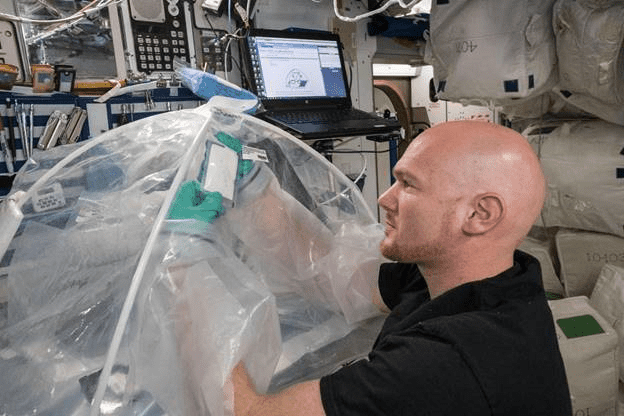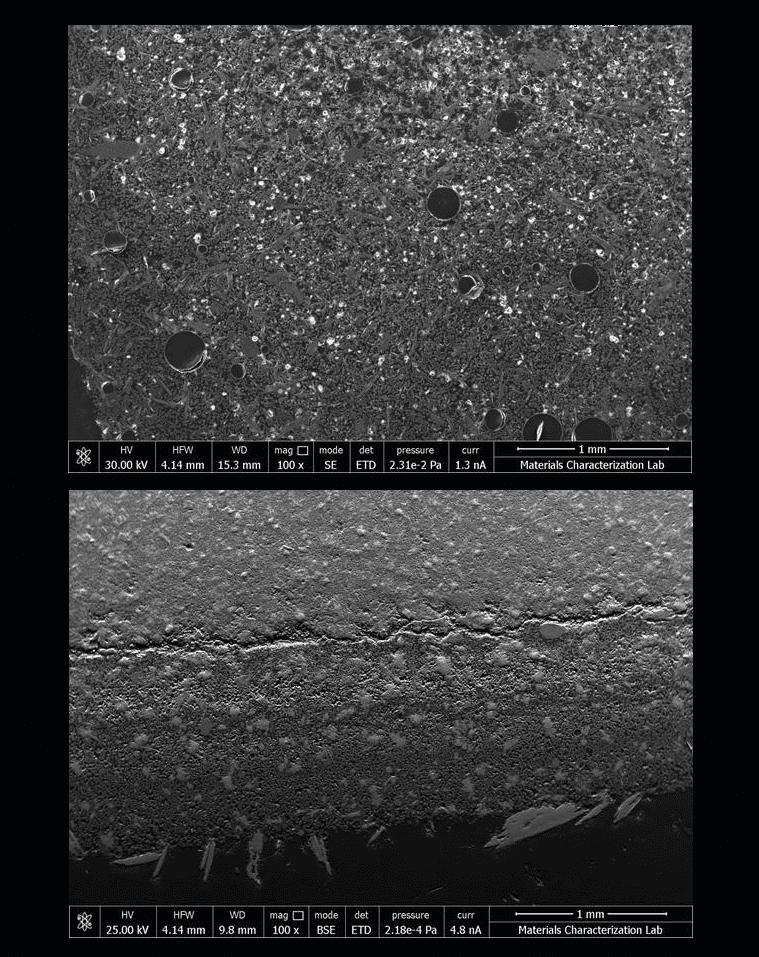Humans have been using concrete for thousands of years to erect all sorts of buildings, from small homes to today’s skyscrapers. Concrete is very durable, strong, and cheap, which explains its widescale success — and, in the future, it might become a crucial constructions material on other words too.
A huge step in this direction was recently made by researchers working on a NASA project that mixed cement on the International Space Station (ISS).

As part of the experiment, called Microgravity Investigation of Cement Solidification, researchers sent tricalcium silicate, hydrated lime, and distilled water — the basic building blocks of cement — to the ISS. Once there, these ingredients were mixed and allowed to harden. The resulting structure was compared to cement mixed on Earth under normal gravity conditions.
The lack of gravity proved to play an important role in how the cement hardened. Surprisingly, the space cement has a uniform density while Earth-based cement has a more layered structure due to gravity-based sedimentation.
This uniform density makes the cement stronger. But this strength may be counter-balanced by the development of large air pockets in space cement, making it more porous than the Earth-mixed counterpart. This increased porosity makes the cement weaker.

So, what is the net effect? That’s something that a strength test will have to determine. The researchers are planning to destroy the samples later this year after they’ve finished conducting their microstructural analysis. Ultimately, this fail test will determine which of the two types of cement is stronger.
Concrete is made by mixing two components: aggregates and paste. In the composition of modern concrete, there are various materials that are used by the industry as aggregates. These include sand, gravel, or crushed stone. The paste is most of the time cement — a mix of limestone, clay, gypsum, and various other minerals or chemicals.
Concrete is highly attractive as a building material in space because of its good thermal and radiation insulating properties. In fact, it’s the go-to material when it comes to shielding radioactive waste.
“On missions to the Moon and Mars, humans and equipment will need to be protected from extreme temperatures and radiation, and the only way to do that is by building infrastructures on these extraterrestrial environments,” said principal investigator Aleksandra Radlinska of Pennsylvania State University. “One idea is building with a concrete-like material in space. Concrete is very sturdy and provides better protection than many materials.”
Concrete could also be mixed on off-world sites with local resources. Lunar regolith, also known as moon dust, is composed of jagged and fine dust grains that could decrease the porosity of the concrete. Radlinska and colleagues have already performed preliminary tests on lunar regolith, the results of which have been submitted for an upcoming publication.
This is why the present evaluation of microgravity-mixed cement is so important. First and foremost, it showed that it can be done.
“Even though concrete has been used for so long on Earth, we still don’t necessarily understand all the aspects of the hydration process. Now we know there are some differences between Earth- and space-based systems and we can examine those differences to see which ones are beneficial and which ones are detrimental to using this material in space,” said Radlinska. “Also, the samples were in sealed pouches, so another question is whether they would have additional complexities in an open space environment.”
Next, the researchers plan on studying various binders that are particularly suitable for various degrees of gravity, from zero gravity to Mars gravity and in between.
The findings were published in the journal Frontiers in Materials.









